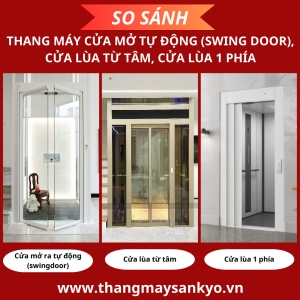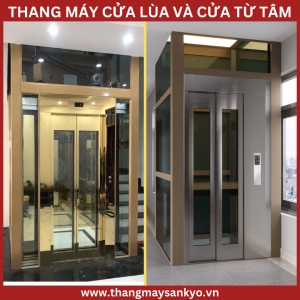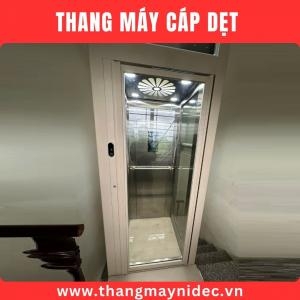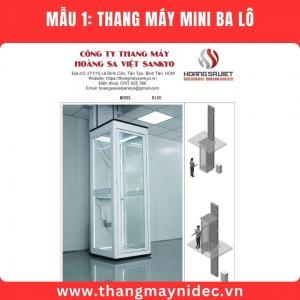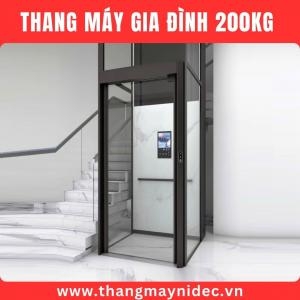The system is processing. Please wait a moment!
- Home Knowledge & Experience Sharing Experience and Knowledge About Elevators
Elevator Machine Room Height Requirements and Notes When Installing
TABLE OF CONTENTS
The requirements for elevator machine room design are increasingly attracting the attention of users and suppliers and installation units. To ensure that an elevator product can operate and function stably, compliance with standards is very important. Below, SANKYO Elevator will provide detailed information on common requirements for elevator machine room height and how to solve them most effectively.
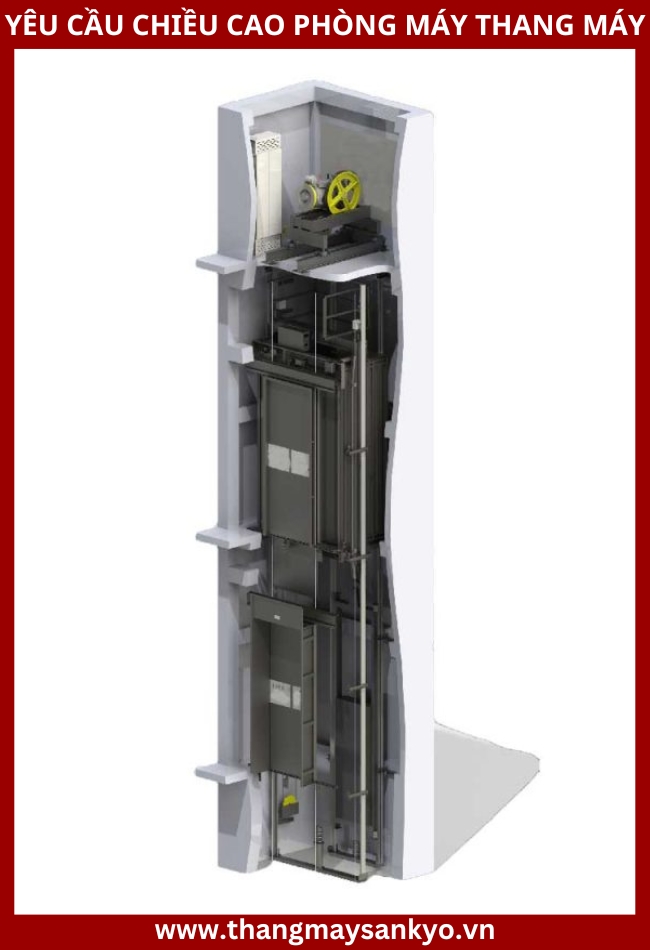
SEE MORE PRODUCTS:
FACTORS DETERMINING THE HEIGHT OF THE ELEVATOR MACHINE ROOM
The average height of each floor usually ranges from 3000mm to 3300mm. Therefore, to ensure safety during operation, the elevator clearance height must be at least 3500mm. In fact, this clearance height will depend on many factors, including:
The load factor or elevator type is one of the important decisions when choosing equipment. In the market today, there are 5 main types of elevators, including: passenger elevators, freight elevators, passenger elevators with goods, food elevators and hospital elevators. The required height characteristics of each type of elevator are described specifically as follows:
For passenger elevators
Passenger elevators are often widely used in high-rise buildings such as apartments, hotels, offices, and multi-storey residential houses. Usually, passenger elevators have common load capacities of 600kg, 750kg, 900kg and 1000kg, with the capacity to accommodate from 9 to 15 people per trip. The minimum height of a passenger elevator is from 4200mm.

Meanwhile, home elevators, the smallest type, have a load capacity of 200kg to 450kg. Therefore, the average height of a home elevator is about 3800mm. For example, a home elevator with a load capacity of 450kg has the following standard dimensions:
- Standard elevator pit size: 1500mm x 1800mm (width x height).
- Standard elevator door size: 700mm x 2100mm (width x height).
- Standard cabin size: 1100mm x 1300mm (width x height).
It is easy to see that the minimum height of a 450kg home elevator with a machine room is 3500mm and 4000mm for the type without a machine room.
For freight elevators
Freight elevators require high load capacity, usually with common loads such as 500kg, 700kg, 1000kg, 2000kg and 3000kg. This means that the height of the freight elevator will vary depending on the load. Below is a table of some dimensions and OH height of freight elevators according to each specific load.
|
Load (kg) |
Height of the device (OH) (mm) |
Size of elevator door (mm wide x mm high) |
|
500 |
1400 |
1000 x 2100 |
|
700 |
2100 |
1000 x 2100 |
|
1000, 2000 |
4200 |
1100 x 2100, 1600 x 2100 |
|
3000 |
4000 |
2000 x 2100 |

For food elevators
Food elevators, which are the most compact in design among elevators, have a load capacity of 50kg to 500kg, and require a minimum OH height of 3000mm. The food elevator door size in this case is 800 x 1000mm (width x height).
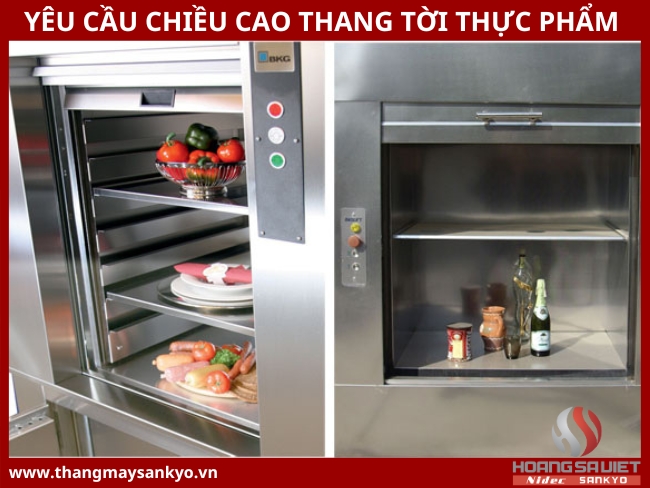
For elevators installed in hospitals
Hospital elevators are designed for a specific purpose, serving the movement of hospital beds with large loads, usually from 1000kg, 1350kg, and 1500kg or more. Therefore, the height of hospital elevators is often higher than other types of elevators. For hospital elevators without machine rooms, the minimum OH height is 4200mm, while for hospital elevators with machine rooms, the minimum OH is 4400mm.

In addition, the manufacturer's brand is also one of the factors that affect the height of the elevator. The standard size and height of the elevator often vary depending on each manufacturer. However, the most important thing is to determine the specific purposes that customers want the elevator to serve. Each manufacturer will focus on creating elevator equipment with the most suitable parameters to meet the specific needs of customers.
We understand that every project and space using elevators is unique, so we are always willing to advise and design the most optimal elevator solution for our customers. Our team of experts not only has in-depth knowledge of technical standards but also focuses on listening and understanding the specific wishes of each customer to ensure that the final product will completely meet and exceed expectations.
SEE MORE PRODUCTS:
MAKING DETAILED DESIGN FOR ELEVATOR MACHINE ROOM
Elevator floor design
During the floor design process, attention should be paid to ensuring the appropriate thickness of the machine room floor, sufficient without adding unnecessary weight. The elevator machine room is not the main load-bearing area during elevator operation. The standard machine room floor is usually about 120mm thick, designed to ensure performance without affecting the elevator's operating capacity.
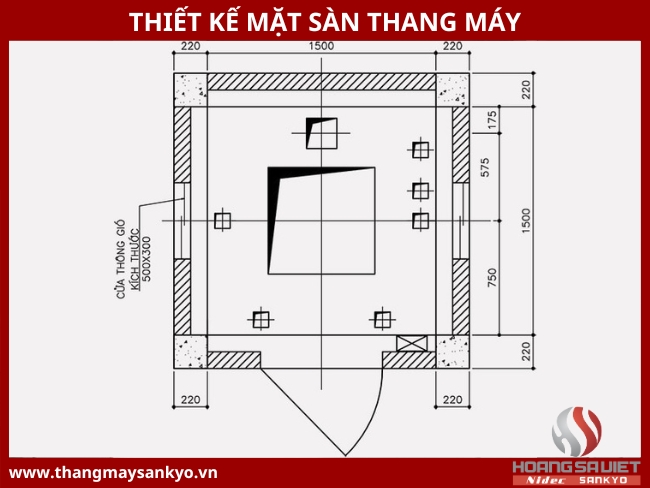
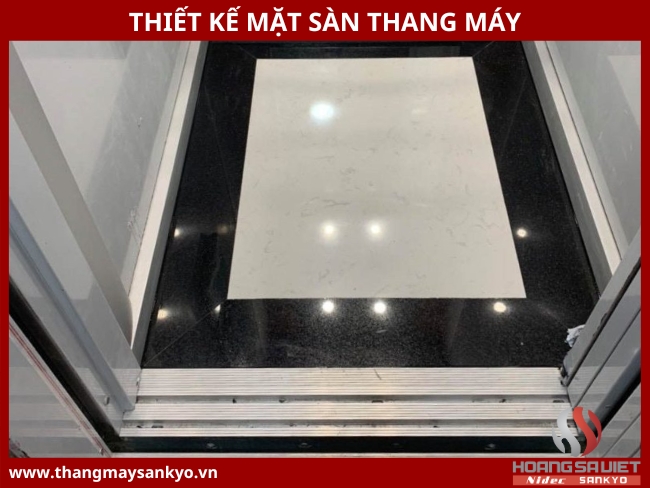
Design of technical holes
Some basic information about technical holes in the engine room floor is as follows:
-
200mm x 200mm Hole: This is the location used to thread the elevator cable.
-
100mm x 100mm holes: Includes 6 holes, including 2 holes for cable threading to control overspeed, 2 holes for installing plumb line of elevator door, and 2 holes for installing rail leading to cabin.
-
700mm x 700mm hole: This is the technical hole used to thread the hoist hook to support the elevator installation process. In addition, this is also the position to bring the traction machine and electrical cabinet to the elevator machine room. Most importantly, this hole also plays an important role in threading the cable to the top of the cabin, so it is necessary to ensure that these holes are covered when the installation is completed.
-
With 100mm x 100mm technical holes , you can decide to install before or after. If not available, drilling and cutting can be considered during installation. Therefore, the thickness of the floor should also be maintained at about 120mm for convenience during drilling and cutting.
Elevator pit design
The pit is measured from the first floor floor to the bottom of the elevator shaft. Each type of elevator will have its own type of pit, depending on the size and depth of the elevator. Therefore, to ensure the pit is constructed according to the correct technique, it is necessary to note some important things.
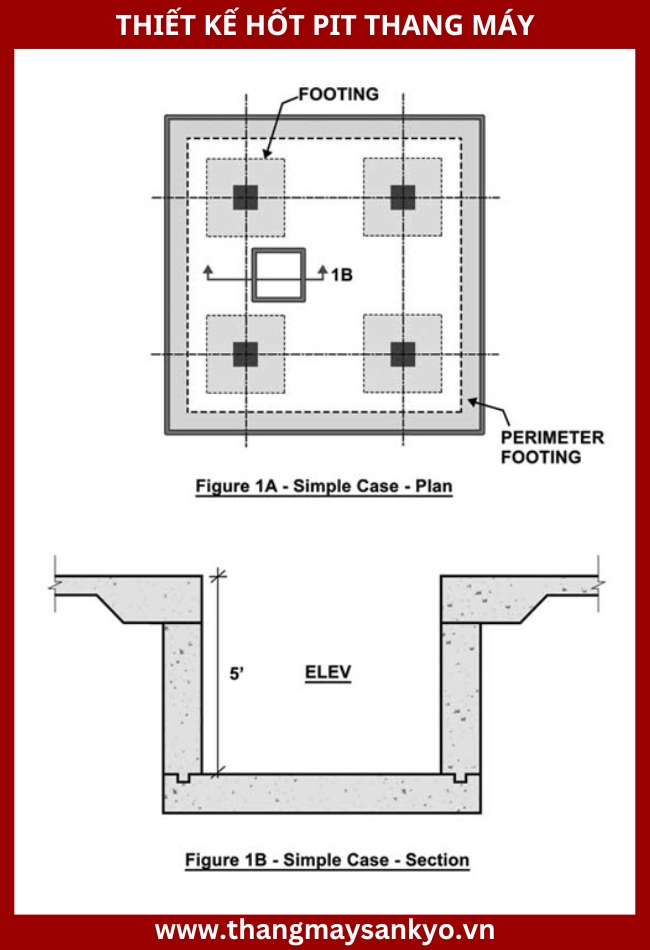
Ensure the design is of the correct size, height, width and depth as required. If there is excess space, it should be made wider and deeper than the minimum parameters to create comfort during the installation and operation of the elevator. Most importantly, it should not be made narrower and shallower than the minimum parameters, to avoid dangerous situations during the operation of the elevator later.
When installing and designing the PIT, attention must be paid to waterproofing the pit. It is not allowed to conduct electricity or water pipes into the PIT area. Regarding the minimum thickness, the PIT must be at least 150mm thick to ensure the safety and stability of the elevator system.
SEE MORE PRODUCTS:
ELEVATOR SPEED REQUIREMENTS
Regarding elevator speed, it is important to calculate and understand the exact number to make the right decision when installing. Elevator speed usually depends on the number of floors of the building, with a quick calculation being to multiply the number of floors by 10 to get the exact or closest speed.
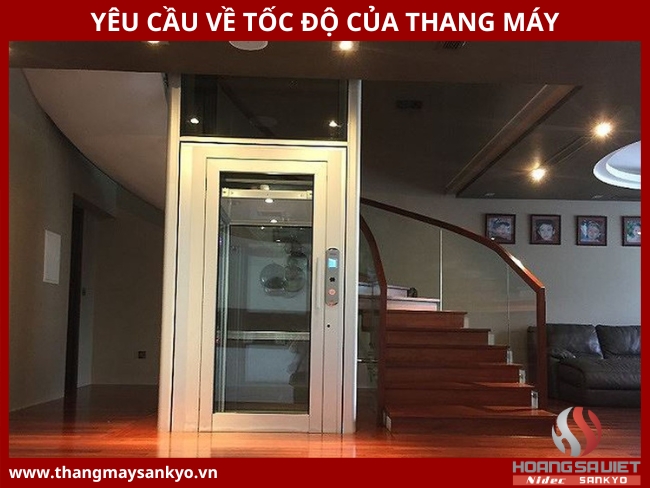
Note that elevators often have variable speeds at each stage of transportation, but there are devices to ensure smooth and stable operation. This small variation is not a concern, and the installation process will ensure the elevator's efficient operating speed.
PURPOSE OF ELEVATOR HEIGHT
As mentioned earlier, the height of the elevator plays an important role in the manufacturing and installation process. The height requirement of this equipment has a great impact on the performance and safety of the elevator. Here are the specific benefits of paying attention to this height:
-
Safety assurance: Sufficient height ensures safety during elevator operation, keeps the equipment operating stably and avoids accidents when moving between floors.
-
Convenient for installation: Reasonable calculation of Overhead height (OH) helps to facilitate the installation of equipment at both ends of the elevator. OH needs to be adjusted to suit the height of the machine room and other equipment for the elevator to operate efficiently.
-
Convenient for maintenance: Suitable height creates comfortable and convenient working conditions for elevator repair, maintenance and servicing teams.
-
Customized for each project: Ensure that each elevator equipment is customized to suit each specific project, not only ensuring convenience but also demonstrating the high aesthetic value of the elevator system .
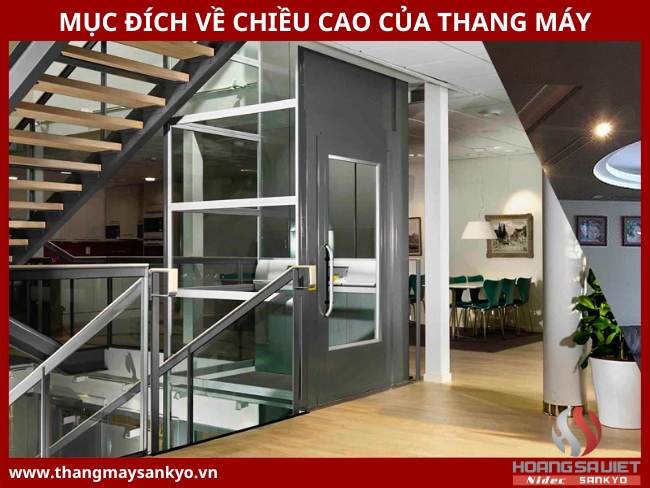
PRESTIGIOUS AND QUALITY ELEVATOR INSTALLATION AND MAINTENANCE UNIT - HOANG SA VIET SANKYO
SANKYO Elevator is a reputable and trusted elevator installation unit in the elevator industry. Dedication and quality are the top goals of SANKYO Elevator. A team of highly qualified technicians with extensive training ensures that home elevator installation is carried out accurately and safely.
We are committed to meeting deadlines and ensuring that our products and services fully meet quality and safety standards. At the same time, we constantly strive to improve service quality, applying the latest technology to meet the increasingly diverse and complex needs of customers. Customer satisfaction and peace of mind are the greatest source of encouragement for us to constantly innovate and develop.
“Hoang Sa Viet Elevator - Always with you on every floor!”
HOANG SA VIET ELEVATOR - THE LEADING PRESTIGIOUS ELEVATOR COMPANY IN VIETNAM
Consultant: 0942.222.075 Office Headquarters: 184/20 Le Dinh Can, Tan Tao Ward, Ho Chi Minh City Hanoi Headquarters: No. 229, Van Tri Street, Van Noi, Dong Anh, Hanoi Website:
thangmaysankyo.vn Email: hungpham@hoangsaviet.com
PRICE SUCCESSFUL!
PRICE UNSUCCESSFUL!
Hotline 0707.025.789
Email hungpham@hoangsa



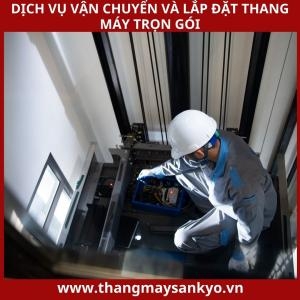
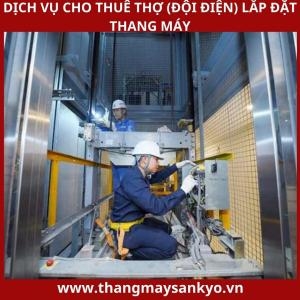
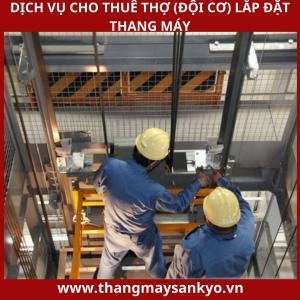

.png)
.png)

.png)
